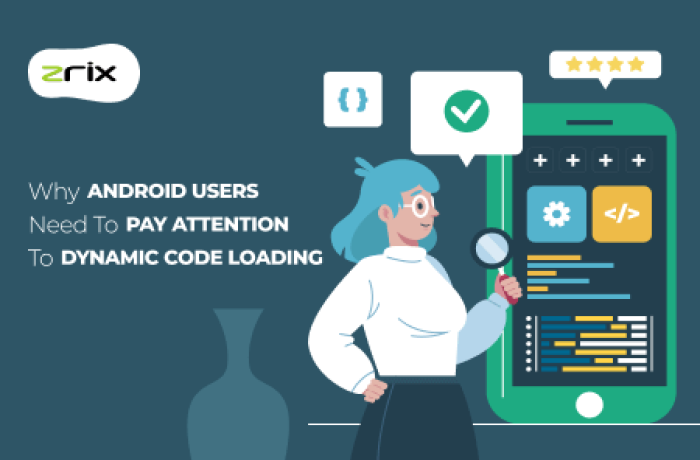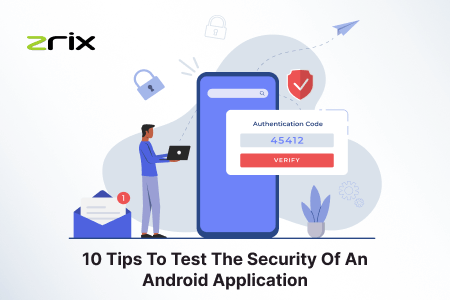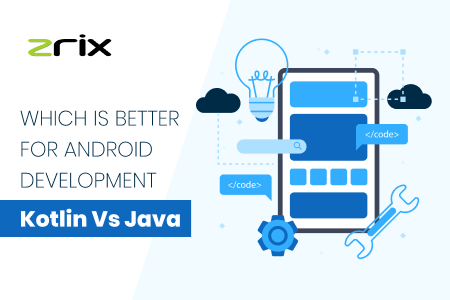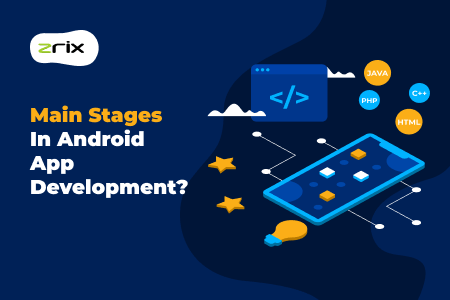At the point when people use the Android apps, anything that's happening behind the scenes normally doesn't enter their thoughts.
Sadly, a programming trick called dynamic code loading may present security chances. This is what you need to think about it.
Today, in this article, we are going to discuss the dynamic code loading for Android applications and will try to access code from a dynamic feature module.
Let's start!
We have frequently gone over the issue when we roll out little improvements to our code and we need to distribute another version of our library or application. Indeed, we can utilize a superior method to manage this by loading code dynamically.
Quick Navigation
DCL(Dynamic code loading) permits an application to load code that isn't essential for its static, starting codebase. The extra code can be recovered from a far-off area and executed at runtime.
"Code Loading Benefits: Code Reuse, Extensibility, Self-upgrade Code Loading Limitations: Complex Model."
Android has always provided DCL since API level one. DCL lets the app developers load additional code at the application runtime. But it has raised various challenges related to the security and open-source dynamic code analysis of apps.
What Is Dynamic Code Loading?
In application development, the whole source code utilized when building an app makes up the codebase. Dynamic code loading permits an app to pull content from past its codebase and execute it during activity, or runtime.
This choice can result in a smaller app size because the normal practice is to store the code distantly as opposed to embedding it in the Android package kit (APK).
The APK is the file design Android utilizes when disseminating and installing apps. It contains all segments for an app to chip away at a viable device.
Dynamic code loading brings advantages from a development viewpoint, including some that improve app usability.
Also Read: Best Python IDEs For Mac, Windows, Linux, and Android
For instance, an app may show distinctive content to an individual if they utilize the free or premium version. Dynamic code loading can show the right content dependent on the user's level without expanding the APK size.
Furthermore, dynamic code loading permits developers to deliver new app versions containing minor changes. Users get the latest versions without downloading anything.
Regardless of these advantages, dynamic code loading can raise chances identified with Android app security. That's why they need for dynamic code testing is important!
If you want to make an app, hire android apps developers at affordable hourly rates from us!
How Malicious Apps Feature Dynamic Code Loading?
Almost 20,000 of the 86,798 apps in one investigation had dynamic code loading.
Further explanation showed that people put a risky app's core functionality into free libraries, then, at that point utilize dynamic code loading to run it. That approach safeguards the app's malicious behavior, making it less detectable.
Google's documentation about the kinds of malware it detects even explains that dynamic code misuse could get hailed as a backdoor assortment. The company characterizes backdoor malware as executing potentially hurtful, far-off controlled actions on a device.
It's anything but an illustration of dynamic code loading permitting an app to extricate text messages. Be that as it may, Google says it takes a gander at whether the code execution expressly performs malicious behavior.
If not, the company regards discretionary code execution as a vulnerability for an engineer to fix. In occasions of perilous apps, self-assertive code execution permits a hacker to distantly complete commands on a targeted device.
How the Researchers Identify Dynamic Code Loading Issues?
Google now and again makes decisive moves to expand security for clients. For instance, third-party cookies track clients, save their data, and later use it to show them targeted promotions.
Be that as it may, the company will hinder third-party cookies on the Chrome browser by 2022. It didn't give a particular date for the change.
Zeroing in on security doesn't make a company liberated from issues, however. Cybersecurity researchers discovered industrious discretionary code execution inside the Google app and detailed it to the company.
The issue was fixed in May 2021, yet it made more people focus on potential issues related to dynamic code loading.
Also Read: Latest Android Application Development Trends
The researchers affirmed that the vulnerability would allow an attacker just to dispatch an app once before stealing a person's Google data. A hacker could misuse the Google app defect to pull a code library from a perilous app on a person's device.
From that point, the cybercriminal could get to virtually the entirety of a person's Google data, including their emails. They could even enact the client's amplifier, camera, and constant area data.
DCL's stealthiness empowers it's anything but a channel to convey malware, and we find 87 apps loading malicious binaries which are not detected by existing antivirus apparatuses. DCL is essentially utilized by third-party SDKs.
Pay Attention For Dangerous App Vulnerabilities!
Since dynamic code loading happens on the advancement end, an average app client can't successfully check whether a specific offering may present secret perils identified with how it functions behind the scenes.
Nonetheless, it's shrewd to look out for any Android app security news that hits tech features. Cybersecurity researchers consistently search for issues that could put countless app clients in danger, then, at that point report on them.
Remaining mindful of potential app risks will assist clients with choosing if and when to update or delete a potentially risky application.
How to Create a Dynamic App? To create a dynamic application, you will have to contact a leading mobile app development agency that promises to be on your side under your budget!



